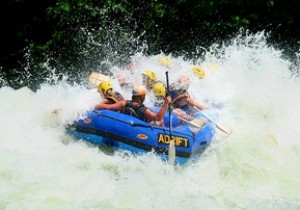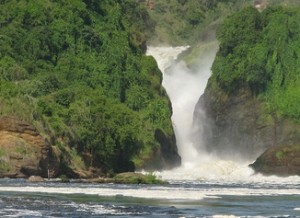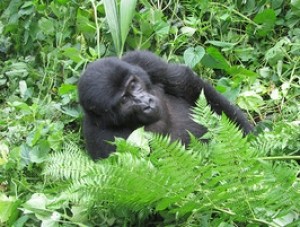Exploring Uganda
The initial trickles of the Nile first streamed in Uganda and all the enormous safaris endeavored is back on the travel map after 20 years. Some of the safaris in Uganda are: like gorilla safaris, mountain hiking ,Wildlife safaris and many more that can be handled by Travel Hemispheres a tour operator in Uganda basing in Kampala. If you know Africa, you expect that once the sun has finally quit for the day, the darkest of nights will swallow you whole, and throughout the countryside, villagers will cluster around flickers—cooking fire, torch, candle.
Although much of the route are once figured prominently in safaris, Uganda has been omitted from travel brochures for the past 20 years. God-fearing tourists wrote off this country as Africa’s hell, and its leaders—Idi Amin Dada and Milton Obote—as Satans. Now, with Yoweri Museveni as president, peace is being restored, travelers discreetly courted.
A polite titter. “Africa wins again,” someone repeats, trying to work it out.
its last full year as a British colony. journals from those days describe a country of ravishing greens, of tea estates managed as satrapies, of tomatoes and bananas bursting with taste. Even in the first years following independence in October 1962, Uganda remained East Africa’s cornucopia, more productive by far than neighboring Tanzania and Kenya. For a while the national parks, which were still managed by the British, seemed immune to the winds of change.
The best national park to start your safari in Uganda is Murchison which is central to the 19th-century saga of the search for the source of the Nile. The river that bathes much of this vast continent rises initially in the highlands of Rwanda, spilling into Lake Victoria, which links Uganda, Kenya, and Tanzania. The Nile departs for the north through Uganda, at first aimlessly, along meanders of Lake Kyoga. Then, with mounting deliberation, under the moniker Victoria Nile, it aims northwest into Lake Albert. Fed by other waters from Rwanda, it will endure further name changes—Albert Nile, White Nile, Bahr al Jebel—as it flows north, on a fairly straight trajectory through the Sudan and Egypt, bound for the Mediterranean.

White water rafting
But in Uganda, the Nile is quixotic. Prior to forming Lake Albert, it narrows from nearly 1,000 feet into a 23-foot gorge and plunges some 130 feet over the lip of the western Great Rift.
Clad in tweed suits and stalking hats, Sir Samuel and Lady Baker followed the Nile upstream through Egypt and the Sudan for nearly three years and, in March 1864, became the first Westerners to see the falls. Within minutes of the sighting, the Bakers’ boat was upended by a bull hippopotamus. The couple were swept out of harm’s way by a whirlpool, but as they dried themselves on a mud bank, they discovered they had been deposited in the middle of the most extravagant convocation of crocodiles in all Africa.
While in Murchison ,in the morning take game drive and in the afternoon board a launch to approach the base of the falls. A steel-plated vessel built 40 years ago in Crewe, England, it has seen better days. This is the preferred way to view game in Uganda—no potholes, no washboards. Along the Nile there is a number elephants in one herd,hippos,kingfisher, but a treeful. African skimmers slipcovering a mud bank. And, best of all, a pair of shoebill storks—enough to make even a show-off birder succumb to the vapors.

Magic Murchison Falls
But crocodiles are the ones who run riot. They watch , immobile, eyes like candied fruit, mouths agape, teeth polished by oxpeckers. All the time, whether lurking in reeds, on sand, or underwater, they seem to shadow . The largest ones—some approaching 16 feet—must have seen their share of history. They certainly could have known my spindly legs from the sixties. Some living today may even have watched Sir Samuel and Lady Baker flail in the whirlpool in 1864.
Once on land in Queen Elizabeth Park, while the elephant herds are now a wisp of their former greatness, a launch trip along the Kazinga Channel turns up waterbuck, bushbuck, mobs of mud-baked buffalo, and a giant forest hog. What birds! In less than an hour and a half, 37 different species, from fish eagle to whiskered tern to spotted stone curlew—generally accompanied by hippos. The finale of Queen Elizabeth is a drive north to view kob, antelopes famous for fierce displays of male territoriality on their mating grounds. Rivals engage in horn-rattling contests of strength, while cattle egrets wheel and cry overhead as if they have a stake in the outcome.
In Queen Elizabeth you get once to explore the country to the south around a ranger post called Ishasha. Here, at the edge of grasslands and stands of acacia, lions make like leopards, sleeping in trees. The Ishasha River is a somnolent collection of pools, festering with hippos. In the field glasses pan upward.
On the drive to the south along the Ugandan frontier toward a forest called Bwindi, you get to pass through tea estates as green .About eight years ago, estimates doubled, with the discovery of a discreet population well north of this range, inhabiting hardly explored Bwindi, then dubbed the Impenetrable Forest. The niceties of habituating primates to humans, learned from patient work with gorillas in Rwanda’s Parc National des Volcans, were applied by a crack team of conservationists to two of the Impenetrable’s estimated 27 gorilla groups. Today, we are among the first wave of visitors to confront them.

Gorilla
The forest is virtually without smell; sometimes without sound. Black-faced warblers, gray-throated barbets, African broadbills are common here. There are other primates in this forest besides gorillas: red-tailed and blue monkeys, and many troops of chimps. In fact, chimpanzees, leaving trails similar to gorillas’, dog our trackers.
AT LAKE MBURO NATIONAL PARK
Lake Mburo National Park is a compact gem, located conveniently close to the highway that connects Kampala to the parks of western Uganda. It is the smallest of Uganda’s savannah national parks and underlain by ancient Precambrian metamorphic rocks which date back more than 500 million years. It is home to 350 bird species as well as zebra, impala, eland, buffalo, oribi, Defassa waterbuck, leopard, hippo, hyena, topi and reedbuck.
Together with 13 other lakes in the area, Lake Mburo forms part of a 50km-long wetland system linked by a swamp. Five of these lakes lie within the park’s borders. Once covered by open savanna, Lake Mburo National Park now contains much woodland as there are no elephants to tame the vegetation. In the western part of the park, the savanna is interspersed with rocky ridges and forested gorges while patches of papyrus swamp and narrow bands of lush riparian woodland line many lakes. In this area expect to explore game drive ,Nature walk, birding and boat cruise
Kidepo Valley National Park is one of Uganda’s most spectacular parks and it is located in Uganda’s remote north –eastern corner. It is 1,442 square kilometers and harbours scenery unsurpassed in any other park in East Africa.Kidepo vally National Park consists of asemi-arid climate with one rainy season per year that’s April- September .It receives 890mm of rain fall of the southern part while 635 is received in the north. Tucked into the corner of Uganda’s border with Sudan and Kenya, the park offers breathtaking Savannah landscapes, which end in rugged horizon. A huge latitudinal range and correspondingly wide climatic conditions have evolved an extremely diverse flora. The park has got a variety of animal species which equally abundant including many which are found no where else in Uganda.
The park’s vegetation is described as open tree Savannah which varies in structure and composition. Mountain forest dominates some of the high places, while areas along the Lorupei River support dense Acacia geradi forest. The flora and fauna of the park are more typical of Kenya than the rest of Uganda. The landscape of the park is studded with small hills, rocky outcrops and inselbergs from which one can obtain stunning views in all directions.
Activities to enjoy while in Kidepo Valley National Park.
Game Drives
Guided nature Walks within kidepo
Bird watching
Visiting the local Karamajong community

